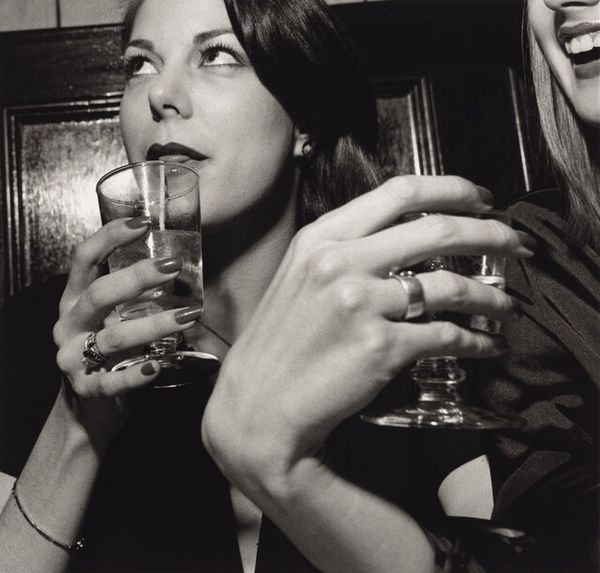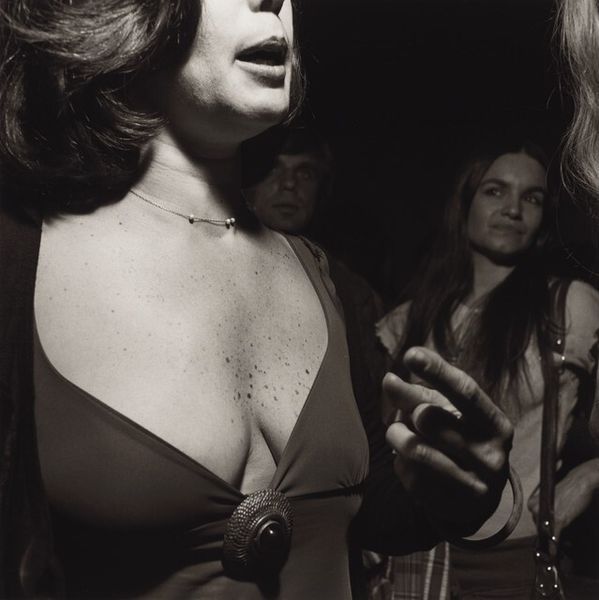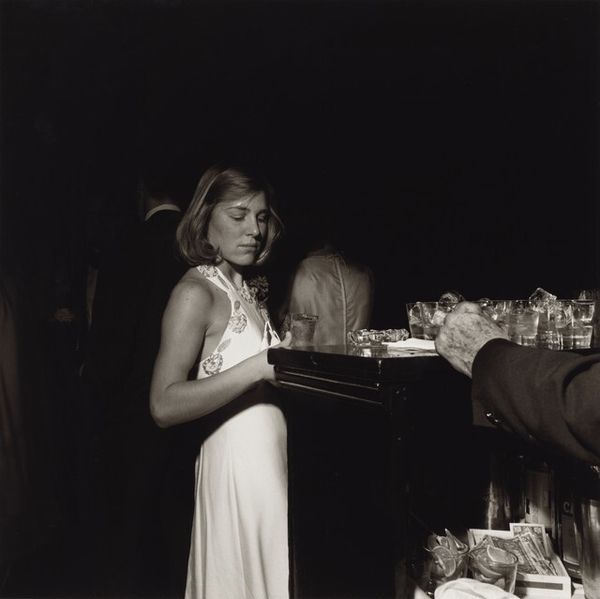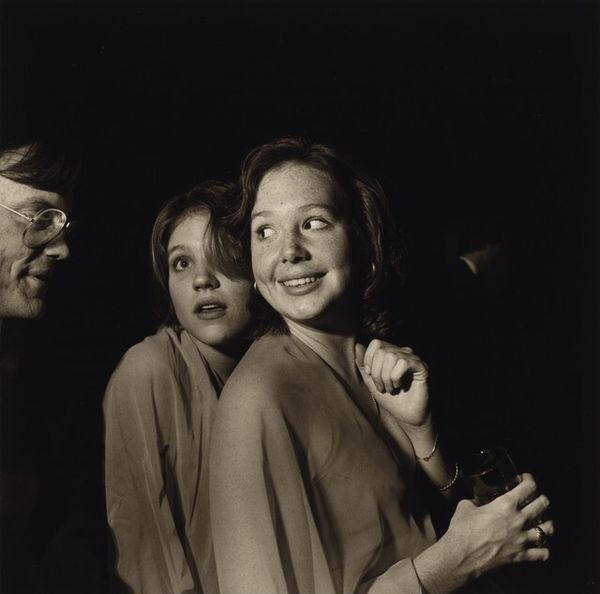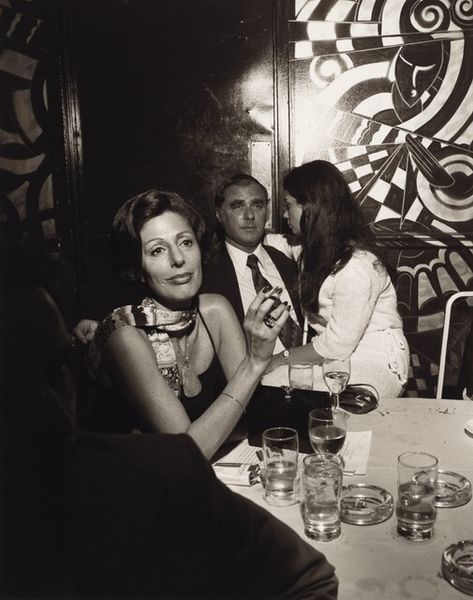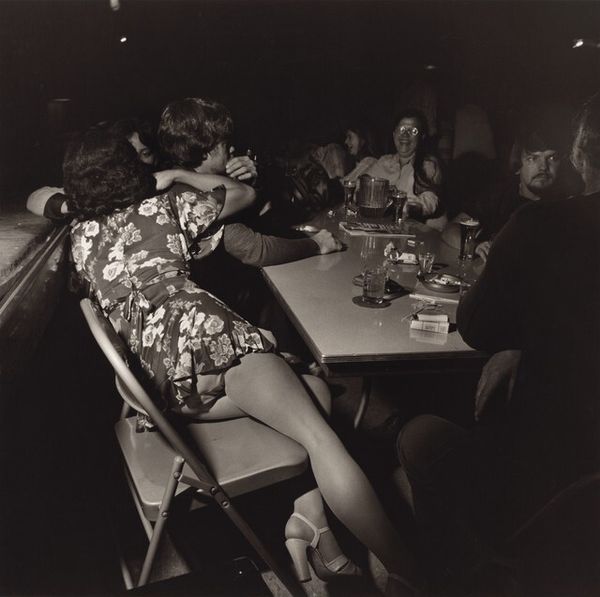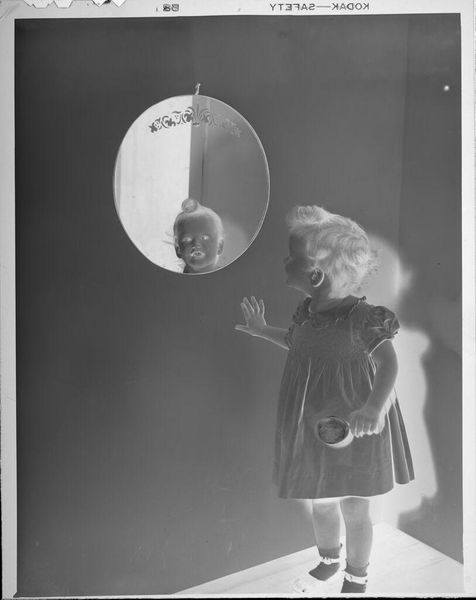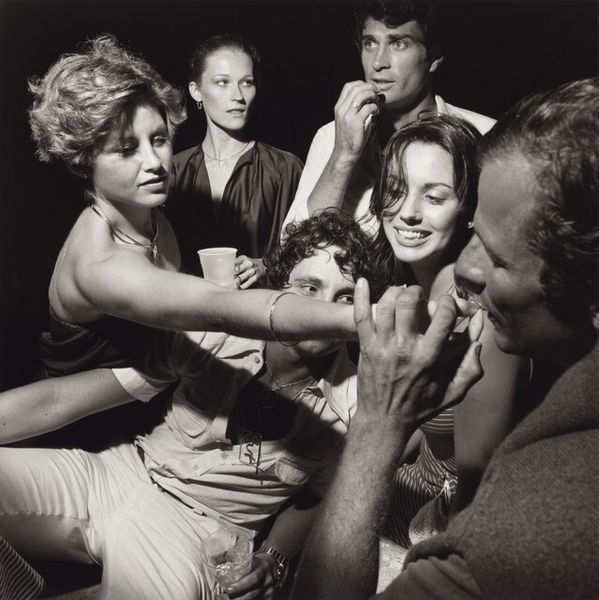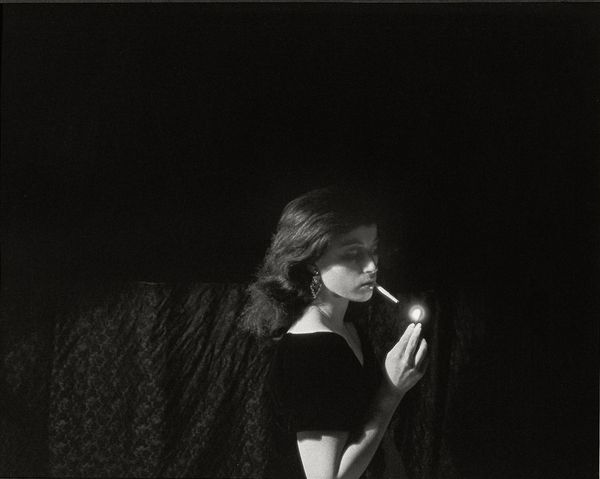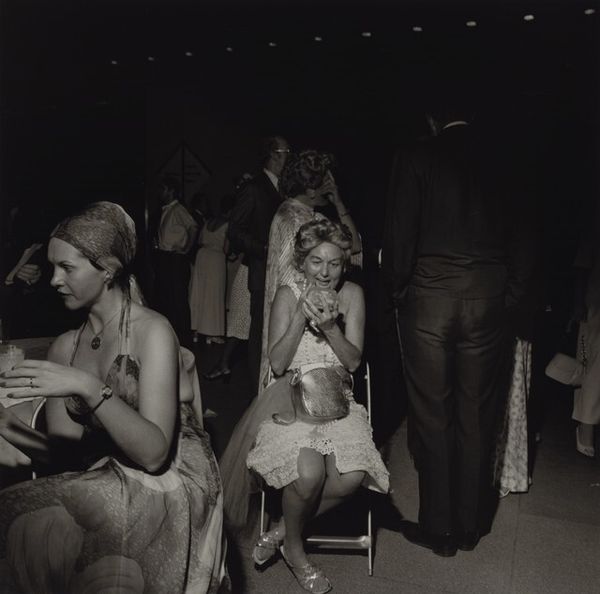
Dimensions: image: 36.1 × 37 cm (14 3/16 × 14 9/16 in.) sheet: 50.4 × 40.6 cm (19 13/16 × 16 in.)
Copyright: National Gallery of Art: CC0 1.0
Curator: Let's turn our attention to Larry Fink's "New York Magazine Party, New York City," likely captured between 1977 and 2002. It's a photograph rendered in stark black and white. What’s your first take on this piece? Editor: Well, my initial reaction is that it's got this really gritty feel to it. The high contrast makes everything seem kind of raw and immediate. Like you’re right there, shoved into a crowded room with these two women. The flash emphasizes the textures: the cheap fabric of the clothes, the shiny bubble gum, the glass… It all feels very…tangible. Curator: Precisely. This image captures the social performance inherent in elite spaces. Look at the woman with the bubblegum—the bubble itself is this fragile, fleeting thing, contrasting sharply with the expensive-looking pendant she’s wearing and the expectation of “high society.” The other woman, with her raised hand and animated expression…both are performing versions of themselves, filtered through privilege, whether conscious or not. Editor: And the materiality here reinforces that reading. Fink chose to shoot in black and white, which abstracts reality, highlighting form and texture over vibrant colour. It is like he is turning it into something new. That process of selection is integral to how we read the image: paper, ink, photographic process—the artist’s choice shapes our view of that scene and influences its status as an art object. Curator: Indeed. It's crucial to understand Fink's commitment to social realism. He documented marginalized communities, but also moved in these elite circles, using his lens as a form of social commentary. This image asks us to interrogate the values, behaviors, and ultimately the power dynamics at play within this specific context. The very act of photographing, the choice of capturing this particular moment… Editor: …Becomes a form of labour, too, right? Fink is working with specific materials, manipulating light, chemistry, and timing to create this object. It's easy to overlook the concrete, hands-on aspect when analyzing photographs, but Fink's choices are crucial to the meaning we take away. And, as a photographic image circulating today, the consumption of such an artwork in digital format affects the reception as well, a process the audiences participates in by taking pictures of it on their phones and reshare. Curator: I think you've nailed the central tension. It reveals the social codes and performances inherent in these kinds of events. This invites us to consider the intersections of gender, class, and the commodification of experience within a late 20th-century context. Editor: I think examining its physicality makes these underlying meanings much more potent; Fink reminds us art exists in a physical world as an object, like bubble gum or a necklace. Curator: An essential reminder, thank you. Editor: Thank you!
Comments
No comments
Be the first to comment and join the conversation on the ultimate creative platform.
